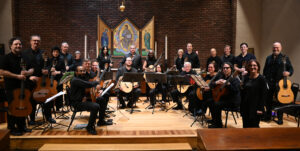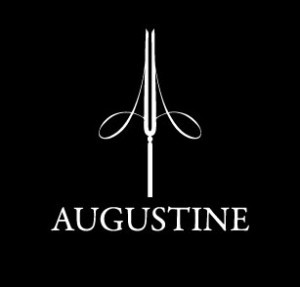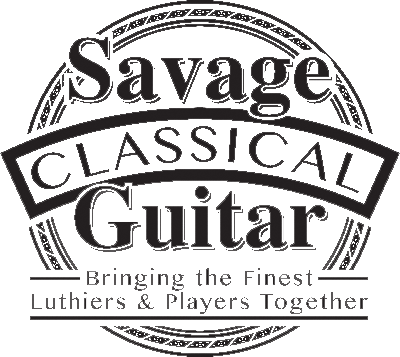by Mark Greenberg
February 2007
Peter Fletcher
Weill Recital Hall
Saturday, February 3, 2007
Okay, how many of you out there have ever heard of Alfred Stieglitz?
Ha! Just as I thought. Approximately no one.
No … wait … wait for it. I see one little hand waaaay out there in the back of the audience, maybe in Marin County.
Well, for your information, A.S. was the photographic equivalent (pun intended) of that other great A.S. — of the guitar — Andres Segovia. Alfred Stieglitz took photography out of the camera clubs and salons and into the Museums and art galleries, just as Segovia took the guitar out of the salons and saloons and into the concert and recital halls.
But I’m not here to provide an easy two credit course in photographic misinformation. For it was the same Alfred Stieglitz who, when shown a defective print (with white dust spots), remarked that he was “interested in the black spot on the white” (i.e. the thing itself), “not the white spot on the black” (i.e. its defect).
The musical equivalent of this statement would be that it behooves us to focus upon the sounds that an instrumentalist makes with his heart, and not the adventitious noises that issue forth from nose, mouth, stomach, feet, etc.
Presented for your consideration: one Peter Fletcher. First seen by this writer at the New York City Classical Guitar Society January meeting.
Fletcher introduces himself, announces he is going to play the Bach Chaconne, sits down and takes off at an amazing rate of MM. One knows what will happen next. He will crash and burn when he hits the runs. One waits, but the moment never comes. Instead, he displays amazing concentration, fabulous focus and awesome chops. Terrific musicality. Not quite the pace of the Segovia 78 RPM recording, but close enough for Bach.
Peter is a great guitarist. That much is clear from very early on.
But there is something else going on … this noise … almost a white noise.
Is it the ventilation system. The elevator? Someone’s shoe soles drawing lazy circles on the floor?
No. It is in fact the artist’s own extremely loud respiration.
Peter is the loudest breather this side of Darth Vader.
He has other odd mannerisms, too. He tends to stamp his foot to administer a certain climactic snap when he has nailed a phrase or a difficult stretch. This is accompanied by a rhetorical flourish of his hand as well. A sort of “Gotcha!”
He reminds me of someone. Oh, yeah. He reminds me of me.
For he has the same specs, same brown hair, selfsame brown turtleneck with which I presented myself to the world when young — and also the same hyperventilation.
True, there is a difference.
Namely: this cat can play all right. He has the willpower to put in the hours, the focus to stay on task, built upon very decent coordination. He’s an achiever … and possibly then some.
Later, after I butcher the Barrios “Ultimo Cancion,” I go over to talk to him. It is not entirely my imagination to see myself in him. He immediately tells me that he too plays the Barrios piece. This does not surprise me. Like the Chaconne, it is a piece of extreme emotional intensity. Such pieces do not appeal to everyone.
Close up, Peter is seen to be a bit better-looking perhaps than I was at his age. There is a half-inch crescent of dried blood where he has cut himself shaving, just above the cure of his chin.
Why must I mention this? Only because Henry James said that the writer should be someone on whom nothing is ever wasted. And I am loath to waste even the smallest speck of blood on a great guitarist’s chin. For my heart went out to him then, I loved the guy. Here he was giving his all, everything he’s got, what the writer and educator Gordon Lish would call his “quidity,” to play at his highest level, and maybe even over his highest level. Isn’t it what music is all about? Hey, what all existence is about?
II
In the Star Wars of the Guitar Galaxy, we (of course) all want to be Luke Skywalker (I’d put my money on Parkening here). But someone has to be Han Solo (Fred Han?). Someone has to be Princess Leia (clearly Ana Vidovic). Someone has to be Chewbacca the Wooki, C3PO and R2D2 (Sounds like Da Bronx Geetar Trio to me). Someone has to be Jabba the Hutt (I have my ideas here, but I’m keeping them to myself). Someone has to be Yoda. (I nominate Verdery. Do I hear a second?) Someone has to write the music. (John Williams. Li’l joke. Hahahahaha.)
And some of us have to be Darth Vader. We’d maybe like to be Andres Segovias. We’d like to be Parkenings. But the world doesn’t need another Chris Parkening. It already has one. And it may not need him either. Even Parkening may not want to be Parkening; at least the Parkening of 1967, or 1977, when guitarists were guitarists and recitals were recitals.
Segovia and Stieglitz were great artists who had a formative effect upon their respective fields, but they caused a fair amount of trouble, too. Both were autocrats. Segovia would order his audience to stop coughing. Stieglitz would insult visitors to his gallery who fell short of his own stratospheric moral standards (as he often did himself!). Both provided an example of accomplishment so high that actual emulation is impossible.
Don’t get me wrong. Parkening has always done a good job. He has gorgeous tone, he’s always superbly prepared and his recordings are always enjoyable. But the era of tuxedos and potted pieces of the type that would have appeared on Segovia’s program perhaps as long ago as a century (about the same time as Stieglitz was publishing his magnificent magazine, Camera Work), has long since passed.
III
That performance of the Chaconne? It was impeccable but a test.
For here is The Real Thing.
And here is the artist, in a tux and tails, at Weill Recital Hall.
He’s practiced and practiced and now he is playing a program with barely a piece on it that Segovia would not have played here at Carnegie (or Town) Hall!!
Way back when. Face it. We are in a time capsule. There is no air.
Correction: There is (an) air leaking in from the main performance space next door, heard at all quieter moments during a fine performance of Six Italian Pieces from the Renaissance. One hears oboes and other assorted woodwinds. Some stagehand has left a door opened. No matter how hard one practices, reality must intrude in its own horrifying and unexpected way.
Unsurprisingly, the artist is aghast. What to do?
He leaves the stage and has the matter corrected.
Two French Pieces from the Baroque Period come next. The first — a Passacaglia by (Uncle) Louis goes well enough, but Peter’s performance of the Parkening transcription of “Les Barricades Mysterieuses” (Ordres, Book II), shows some strain. Two nights earlier, he had played this beautiful piece by Francois Couperin nearly perfectly at the February meeting of the Guitar Society (though without quite the forward propulsion that Parkening achieves in his wonderful recording of this piece). Still, the distraction from next door may unfortunately have caused some loss of focus. A fine performance of the Bach Chaconne is not without misadventure, necessitating a restart at the arpeggio variations. Still, this is a superb and deeply heartfelt performance, coming close to capturing the true emotional depth of this magnificent music.
The first half of the program concludes splendidly with Variations on a Theme of Mozart, Op. 9. Don’t get Sor, get focused. Peter plays the piece as fast and as well as anyone I have ever heard in my life.
At intermission, I meet a friend who is a physician.
He couldn’t care less about any glitches in the Chaconne. But he has a question.
“What was that noise?” he asks me.
“Oh, that was the performance next door.”
“Not the music. It was more like a white noise …”
I tell him.
Oh! He says. “I thought it was someone’s infrared hearing device. It’s very distracting.”
IV
All right, so now the guy hates me. I mean, I called him Darth Vader, point out how he walks around with a chin full of dried blood, describe a knockdown by the Chaconne with a fair amount glee, etc, etc.
Look, Peter wanted to give a 1970s style concert. Didn’t I oblige him by giving him a 1970s review? Weren’t all the guitarists in those days lined up in the front row? Waiting to snipe?
It just so happens that I happen to have here in my hands a vintage bottle of genuine 1974 Parkening Post-Concert Chatter.
Here.
Let me uncork it and pour a bit for you:
(Sound of bottle being uncorked. We now hear the murmur of a crowd leaving the hall.)
First Guitarist: “Did you see the way he double fingered on the runs? Musta done it at least …”
Second Guitarist: “… the Segovia edition? Gimme a break. You gotta go back to the violin score …”
First Guitarist: “… to the manuscript …”
Second Guitarist: “… that note in the 13th bar of the 16th variation should be an enharmonic …”
First Guitarist’s Wife: “Well, I think he’s cute!!!!”
Second Guitarist (incredulously): “Did you see his expression?????????”
Wife (a bit nastily): “What was wrong with it?”
Second Guitarist: “He’s got a permanent smile. That guy has to be on something …”
Third Guitarist: “The rhythm was wrong!”
See what I mean? Parkening went and played the Chaconne perfectly and what did it get him — three of his peers implying that he was an unenlightened stoner who couldn’t count.
V
A man goes into Carnegie Hall and orders a 1974 concert.
Actually, I ordered two double scotches during intermission.
Didn’t have JW black. Had to take Chivas. One for me. One for the kid. Lemme tell you about the kid. He’s 21, hates classical guitar like poison.
Likes JW black though.
Sorry. Mind’s not on what I’m saying. So this guy gets this 1975 concert, tries to stuff his quiddity into it. Quiddity doesn’t like it. Can’t breathe. Gasping. Stamps its foot during certain crucial transitional passages of the Bach D minor Chaconne.
Look, no one’s perfect. Is Parkening so perfect? Didn’t he feature a movie of Segovia reaming some poor schlub about a half a century ago? What would Stieglitz have said about that?
And for why? Segovia yelling at the schlub, I mean.
Because said schlub was stamping his foot!
Anyway, that is neither here nor there. Well, it’s maybe there.
Here is the second half of the concert.
I don’t have to tell you it went much better. The Tansman Suite was terrific. Best of all was the Satie. The Prelude from Jack in the Box was a masterpiece. You should not miss hearing Peter’s CD of Satie music (Centaur CRC2731). Prelude and Gigue by that famous duo of Ponce and Weiss? Not heard much anymore, but very nicely done. As was “Recuerdos” by Tarrega. When was the last time I heard it other than as an encore?
For the modern stuff: Koyunbaba (my understanding is that it means “The Grandfather/Spirit of the Sheep” or something mystical like that) was lovely, but one has to go to disc to appreciate Fletcher’s great emotional power. His rendition on his own CD, A Peter Fletcher Recital, is as thrilling any I have heard.
Lemme tell you about the kid. Usually he hates guitar concerts.
He liked this one. I mean, even before he had the Chivas.









